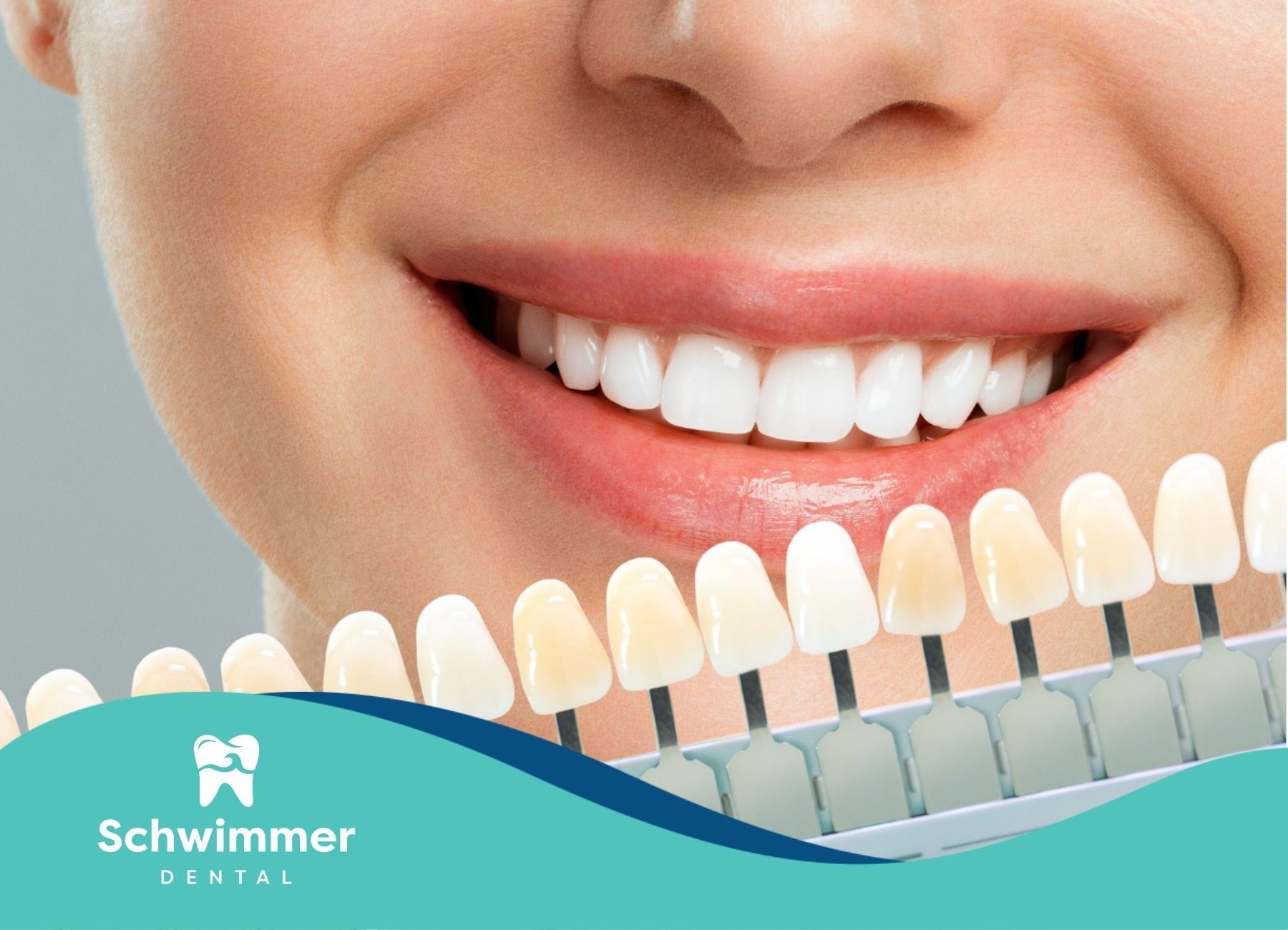Crowded Teeth Causes: From Genetics to Childhood Habits
As a dentist, I see patients every day who are concerned about the appearance and health of their smile—and crowded teeth is one of the most common issues we address.
When there’s not enough room in the jawbone to allow your teeth to come in properly, they begin to shift, overlap, and twist. This misalignment isn’t just a cosmetic concern—it can lead to real oral health problems if left untreated.
Fortunately, modern treatment options—from braces to clear aligners—make it easier than ever to correct dental crowding and achieve a healthier, more confident smile.
Let’s walk through the most common causes of crowded teeth and what you can do about them.
Understanding Crowded Teeth: Definition and Impact
In simple terms, dental crowding happens when your jaw doesn’t have enough space to accommodate all of your teeth in proper alignment. I often compare it to trying to fit too many books on a shelf—they end up overlapping, tilting, or falling over.
In the same way, when your teeth don’t have room to grow in straight, they twist, turn, and overlap, affecting not just the look of your smile, but also how your teeth function day to day.
And here’s why that matters: crowded teeth create tight, hard-to-clean areas where plaque and bacteria love to hide. Over time, this can increase your risk for tooth decay, gum disease, and even bad breath. Addressing crowding isn't just about aesthetics—it's about protecting your oral health long-term.
What are Crowded Teeth?
Crowded teeth are a type of malocclusion—a misalignment of teeth—where there's insufficient space in your dental arch to allow teeth to grow in straight. While it can start with baby teeth, the issue usually becomes more pronounced when adult teeth come in.
Think of your jaw as a puzzle board and your teeth as the pieces. Ideally, they all fit perfectly. But with dental crowding, it’s like trying to squeeze a few extra puzzle pieces into a board that’s too small. Something’s got to give, and that often results in teeth overlapping, rotating, or sticking out at odd angles.
In my experience, even slight misalignment can make brushing and flossing more difficult—which, over time, can lead to bigger dental concerns.
How Do Crowded Teeth Affect Oral Health?
Let me be honest—keeping crowded teeth clean is tough. When teeth overlap, your toothbrush and floss can’t always reach every surface. This makes it easier for food particles and bacteria to stick around, especially in tight crevices.
That lingering plaque can lead to a cascade of oral health issues. First comes tooth decay, as bacteria produce acid that erodes enamel. Then there's gum disease, as plaque along the gumline irritates the tissue. And if left untreated, it could lead to bone loss or even tooth loss.
So when we talk about treating crowded teeth, we’re not just aiming for a straighter smile—we’re helping you avoid bigger dental problems down the road.
Primary Causes of Crowded Teeth
Genetic Influences and Hereditary Factors
In most cases, crowded teeth are influenced by genetics. Just like eye color or height, you can inherit the size of your jaw and teeth. If someone in your family has a small jaw or larger-than-average teeth, it increases your chances of developing crowding.
I’ve seen patients with perfectly healthy teeth—but because of genetics, there simply isn’t enough room for them to align properly. Sometimes a misaligned jaw, also passed down through family lines, adds to the issue.
While we can’t change our genetic blueprint, we can use this knowledge to guide treatment planning. That’s why I always recommend early orthodontic evaluations for kids—especially if there’s a family history of crowding.
Poor Dental Care and Early Loss of Baby Teeth
Genetics may set the stage, but other factors can worsen crowding. One of the most overlooked causes is poor dental care in early childhood. For example, untreated cavities or infections can lead to premature loss of baby teeth.
Why does that matter? Baby teeth aren’t just temporary—they act as guides for permanent teeth. When they’re lost too early, neighboring teeth can drift into the open space, leaving little room for adult teeth to come in properly. This can result in:
- Shifting Teeth: Surrounding teeth tilt into the gap, blocking the path for adult teeth.
- Impaction: A permanent tooth may become trapped below the gum line, causing even more crowding.
Good early dental care and regular checkups are key to preventing these issues before they start.
Analyzing the Severity of Teeth Crowding
Not all cases of dental crowding are the same. Some patients have just a minor alignment issue, while others have severe overlap that affects speech and bite.
Understanding the level of crowding helps us recommend the right treatment path—whether that’s a simple retainer or full orthodontic care.
Mild Crowding and Its Implications
Mild crowding usually affects just a few teeth and may not be very noticeable. However, even small overlaps can trap plaque and increase your risk of cavities.
In these cases, I often recommend a preventive approach: good oral hygiene, regular dental visits, and sometimes minor orthodontic intervention like clear aligners to guide teeth into better alignment.
Moderate to Severe Crowding: When to Seek Treatment
When crowding becomes moderate or severe, the problems go beyond appearance. Teeth may overlap significantly, rotate, or even become impacted. This can interfere with your bite, speech, and ability to clean your teeth.
Let’s break down the differences:
| Severity Level | Characteristics | Treatment Options |
|---|---|---|
| Moderate Crowding | Noticeable overlapping or twisting of multiple teeth | Braces (metal, ceramic, or lingual) |
| Severe Crowding | Significant overlap, tooth impaction, or bite problems | Clear Aligners (e.g., Invisalign), tooth extraction in some cases |
In severe cases, the sooner we intervene, the better the outcome—especially if crowding begins to affect your jaw function or causes discomfort.
At Schwimmer Dental, we understand how frustrating crowded teeth can be—and we’re here to help. Whether you need braces, clear aligners, or just want expert advice, we offer personalized care tailored to your smile.
📍 Visit us at
1115 Arnold Ave, Point Pleasant, NJ, 08742
📧 Email: office@schwimmerdental.com
📞 Call:
(848) 279-4727
Ask us about our affordable membership plans—designed to make expert dental care accessible for every family.
Let’s get your smile back on track—book your consultation today!
Frequently Asked Questions
What age should crowding teeth be treated?
In most cases, we recommend evaluating crowding in childhood, especially around age 7 when adult teeth begin to emerge. However, adults can absolutely benefit from treatment too. It’s never too late to straighten your smile!
Can crowded teeth fix themselves over time?
Unfortunately, crowded teeth don’t correct themselves. In fact, they often worsen over time. That’s why it’s important to talk to a dental professional early on.
Do crowded teeth always require braces?
Not always. Mild crowding may be managed with clear aligners or even retainers, depending on the case. We’ll always tailor the treatment plan to your unique needs.
Sources:
- https://www.mountsinai.org/health-library/diseases-conditions/malocclusion-of-teeth
- https://www.ncbi.nlm.nih.gov/books/NBK592395/
- https://my.clevelandclinic.org/health/diseases/22010-malocclusion
- https://www.webmd.com/oral-health/what-is-malocclusion
- https://pmc.ncbi.nlm.nih.gov/articles/PMC10222176/



